As part of the Norman Forward 1% for Art program, the Norman Arts Council is pleased to announce the selection of artist James Johnson to create a large-scale public sculpture for installation at the Norman Public Library East Branch. Located at 3001 E. Alameda Street, the library is currently under construction.
The new Norman Public Library East Branch will have a collection of 20,000+ items and will feature 12,500 square feet of highly flexible space that will support a mobile service approach, new education models, collaborative learning, information sharing and digital literacy.
The 1% for Art project team encouraged artwork that would complement the beauty of the site and the architecture of the building, expressing a spirit of wonderment, curiosity and learning inherent to all libraries. Johnson’s proposed sculpture hit all those marks, taking cues from the natural environment of the site and the building itself.
Though not seen in the photos of the artist’s model, the final sculpture will be made of Corten steel, the same material being utilized on the façade of the Library building. The artwork will be 14 feet tall and weigh approximately 3,000 pounds, making it clearly visible to street traffic and visitors alike. The sculpture will also be positioned so that during the Solstice, the sun will shine through the sculpture and onto the building.
Johnson is well-versed in creating large scale public art works, having completed numerous works currently on permanent and temporary exhibition in Kansas, Illinois, Arkansas, Indiana, Missouri and Iowa. He is inspired by ancient cultures, especially that of the Mayan and Inca, as a means to communicate lifestyle and culture. With a career spanning over 40 years, the sculptor has taught in colleges across the Midwest when not working on his own craft.
“As a sculptor, I have always been concerned with creating works of art that cause the viewer to pause and reflect upon their surrounding and, in doing so, become more aware of the environment that they are passing through,” Johnson said. “Equally important has been my use of the arch as a means of transforming the viewer from a place and time of activity to one of calm and reflection.”
The $30,000 project sought artists through an open call for requests for qualifications this past fall, attracting 125 applicants from across the country and world. A selection panel composed of a City of Norman designee, Public Arts Board member, Norman Arts Council board member, Ad Hoc Committee member, the designer/architect of the complex, a stakeholder in the project, arts expert and at large community members deliberated over artist qualifications.
The panel selected three finalists — hailing from Illinois, New Mexico and Norman, OK — who each created tailored design proposals inspired by the plans for the complex, as well as the history and culture of Norman. Johnson’s was selected from the three proposals, and the plans are for the sculpture to be complete and dedicated with the library’s targeted mid-May 2018 opening date.
On April 12, 2016, the City of Norman contracted with the Norman Arts Council to administer the 1% for Art program designated for Norman Forward projects. Norman Arts Council’s administrative role includes project development, refining a selection process (including the assembly of balanced selection panels), executing and installing the selected works through coordination between the City and artists and public engagement and education. Debby Williams, who served in similar capacity as director of the Oklahoma Art in Public Places Division for nearly a decade, was selected to manage the 1% for Art program.
James Johnson’s work is the one of many public art projects that will populate Norman through the Norman Forward 1% for Art program. Mark Aeling’s SPLASH will be ready to install upon completion of the Westwood Family Aquatic Center later this year. A new request for qualifications for the proposed new Central Branch of the Norman Public Library will be announced in the coming months.
One of James Johnson's past projects.







